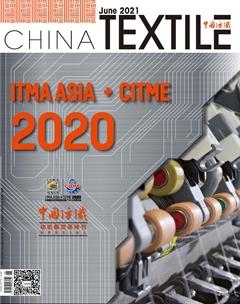7月中旬英國紡織業將恢復

疫情對于英國的整個行業都是一個不小的打擊。對英國的紡織機械行業而言,訂單量有所下降,但幅度不大。與2019年相比,2020年紡織機械的總出貨量僅下降3%。我們相信疫情很快就會得到控制,到7月中旬,整個英國的人口都將接種疫苗,那時紡織行業也將恢復正軌。與此同時,國際社會對英國制造的紡織機械仍有相當大的需求,我們的制造商也正在推進他們的生產計劃。預計2021年底到2022年初對新機械的需求將會增加。然而,對于那些沒有充分穩定疫情使疫情常態化的國家來說,情勢并不輕松。
出行限制和簽證發放以及隔離要求意味著此次參加ITMA ASIA的展商們不能面對面同潛在客戶交流。這對國際展商來說,確實受到了嚴重的影響。當地的展商也會受制于地方的社交準則。在展覽面積上,主辦方可能會考慮減少展出面積,國際參展商的工作人員也將減少。但總的來說,這次展覽勢必會取得巨大的成功。
在出口方面,我們的主要銷售區在歐洲,美國也是我們的主要銷售國。此次我們有七家優質企業參展。我們可以保證,每個展品都經過企業們精心的設計,充分考慮到環境友好的因素,使用起來既高效又可持續,具體細節我們可以在展會上見分曉。在智能化方面,歐洲的紡織機械企業投入了大量資金,以確保他們的最新產品能夠滿足紡織生產商日益增長的需求,即與可持續發展相結合的、更加靈活的生產方法和系統。
亞洲紡織行業發展迅速,新興市場層出不窮。但在過去的兩到三年中,中國對于英國產的紡機需求已經下降了相當大的部分。談及地位,中國仍然是一個及其重要的市場并引領著亞洲的紡織業。而印度正在被孟加拉國、巴基斯坦和斯里蘭卡趕超也是不爭的事實。
目前,全球的紡織業都面臨著這樣的幾個挑戰:穩定的生產力,關稅變化,環境影響及社會因素。紡機行業的未來顯然是工業4.0的時代。企業們將更加重視自主系統、機器人、智能制造和企業資源規劃這些方面。對于中國紡織機械企業來說,繼續開發紡機機械設備和提升產品的售后服務非常重要。
UK textile industry will be recovered in July
Interview with Alan Little, Association Director of BTMA
The outbreak is a blow to the whole industry in the UK. We cannot comment on the textile market in the UK other than they are suffering from delays in obtaining supplies of raw material from overseas. However, with reference to the textile machinery industry in the UK there has been a fall in orders, but not a dramatic one. Overall shipments of textile machinery in 2020 only fell by 3% compared with 2019. We believe that the pandemic is coming under control and that the whole population of the UK will have received a vaccination by mid-July. This is when we expect things to return to normal. In the meantime, there is still a reasonably good demand for UK made textile machinery and our manufacturers are pushing ahead with their production programme. We expect that the demand for new machinery will increase towards the end of 2021/beginning of 2022. However, it will be difficult for those countries that have not stabilized the pandemic sufficiently to allow things to normalize.
It has had a major impact on international exhibitors as restrictions on travel and issuing VISAS plus the quarantine requirements means they cannot meet potential customers face to face. For local exhibitors they will be bound by the local distancing rules etc. Overall, the exhibition will be slightly smaller with less machinery from international exhibitors using local staff to man their stand. However, there is no doubt that the show will be a great success.
As for the export market, 0ur main sales region is Europe and the main nation currently is the USA. This time we have 7 local enterprises exhibiting, all of them producing high quality equipment and services. As an Association we cannot divulge details other than the equipment being shown is carefully designed to take into account environmental issues, efficiency, and sustainability. I believe that textile machinery enterprises in Europe have invested heavily in ensuring that their latest developments meet the increasing demands of the textile producers with regards to increased and flexible production methods and systems combined with sustainability.
It is true that the Asian textile industry is developing rapidly however the Chinese market has certainly slowed down in their requirement for UK made textile machinery over the past 2 or 3 years. However, China still represents an important market and leads the way in Asia. India is being overtaken by Bangladesh, Pakistan, and Sri Lanka.
Now, the biggest challenges facing the global textile industry are maintaining stability and productivity, changes to tariffs, environmental impact, and social challenges. There will obviously be greater emphasis on the Fourth Industrial Revolution (Industry 4.0) involving autonomous systems, robotics, smart manufacturing, and ERP. For the Chinese textile machinery enterprises, it is important that they continue to develop their machinery and after sales service.

